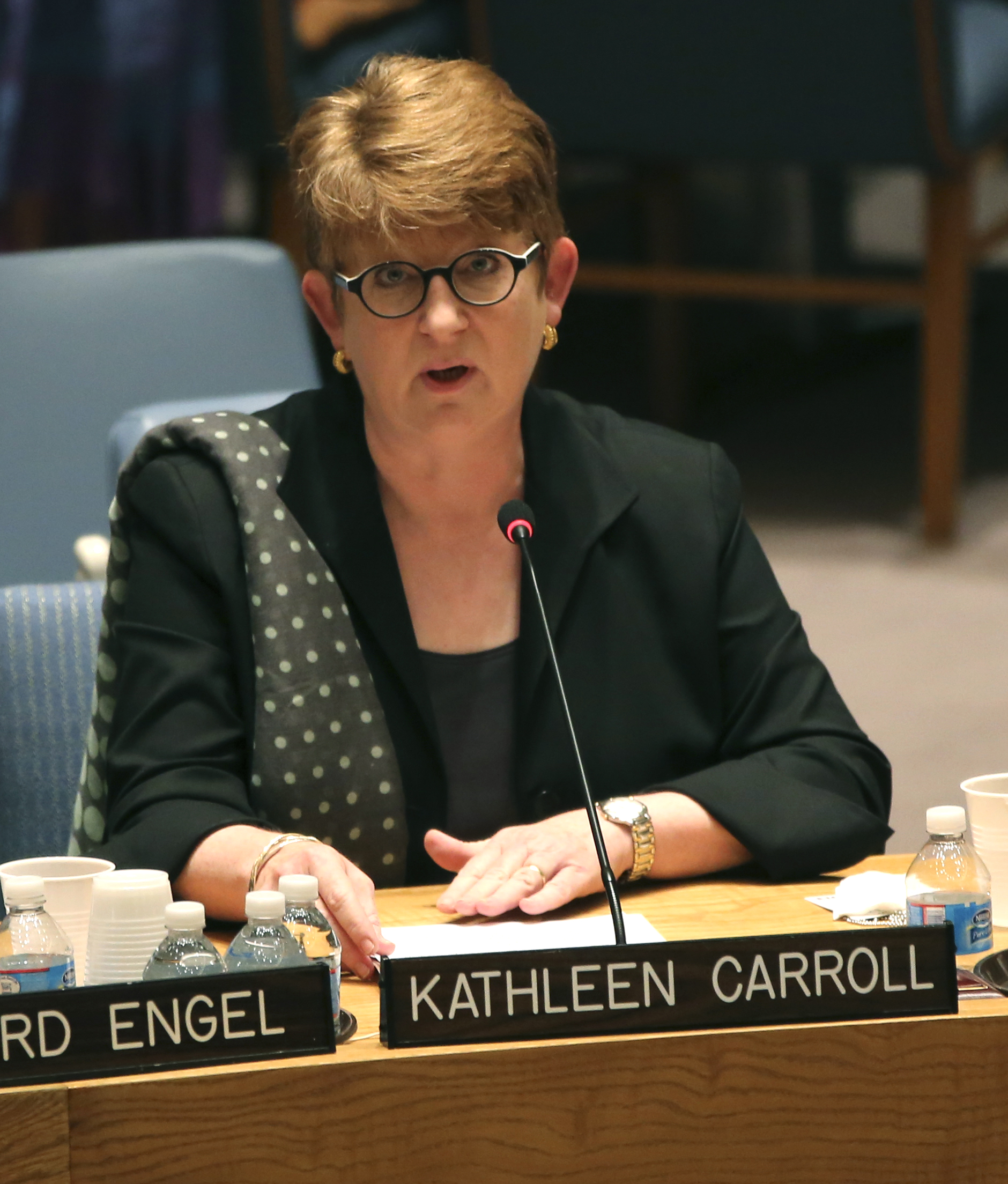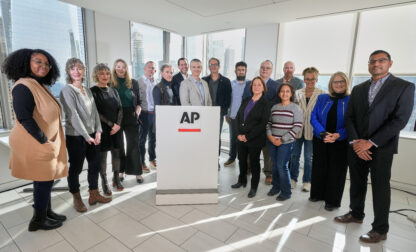
Prepared remarks
Kathleen Carroll
Senior Vice President and Executive Editor
The Associated Press
Remarks on the safety of journalists worldwide
United Nations Security Council
July 17, 2013
Good morning ladies and gentlemen and thank you for the opportunity to talk about an important subject — the right of journalists around the world to work without threat or peril.
Everyone who walks into the main newsroom at AP’s global headquarters in New York passes our Wall of Honor, a softly lit display of photographs and biographies of the 31 Associated Press journalists who have died on assignment since the organization was founded 167 years ago.
I pass it every morning, frequently pausing to look at the faces of the five men killed on my watch as editor:
Nazeh Darwazeh, killed on April 19, 2003, while filming a confrontation between Israeli soldiers and Palestinians in the West Bank city of Nablus.
Saleh Ibrahim, shot to death on April 23, 2005, as he arrived to cover an explosion in the Iraqi city of Mosul.
Aswam Ahmed Lutfallah, shot to death by insurgents as he filmed their gunfight with police in Mosul on December 12, 2006.
Ahmed Hadi Naji, who left home astride his red-and-white motorbike on the way to the AP Baghdad office and disappeared. His body was found in a morgue six days later, January 5, 2007. He had been shot in the back of the head.
Anthony Mitchell, headed home to Kenya from a West Africa reporting trip when the plane he was on crashed in Cameroon on May 5, 2007, killing all aboard.
Like those five men, most of the 31 people on our wall died covering conflict, beginning with the 1876 Battle of the Little Big Horn in the United States.
They fell during the Spanish-American war in Cuba, the Russo-Japanese War, the Korean conflict and World War II – which claimed five AP journalists. Another five died in Vietnam.
Many were shot to death. In an ambush. Or a riot. Shot at a checkpoint. Captured, tortured and shot by the Nazis.
Two were attacked by mobs during civil unrest. Others were mortally wounded by mortars or shells. One went down on a warship, another on a refugee ship.
Others were lost in plane crashes or one of many helicopter crashes, including the 1993 crash in Afghanistan that took the life of the only woman on the Wall of Honor, my friend Sharon Herbaugh.
We bring visitors to the Wall of Honor and it’s important to explain why this is such a special place to us.
These people are part of our professional family. They are in my head and heart each time we send AP journalists off into the world’s many treacherous spots.
But more often, journalists aren’t heading off to an assignment in a treacherous spot. That dangerous assignment is the country they call home and the threat is not from war.
Indeed, most journalists who die today are not caught in some wartime cross-fire, they are murdered just because of what they do. And those murders are rarely ever solved; the killers rarely ever punished.
The Committee to Protect Journalists documents the attacks on journalists each year and their annual accounting is grim indeed. More than 30 journalists are murdered every year and many are abducted and tortured first.
In the overwhelming number of cases — 90 percent — the killers go unpunished. Free to attack and kill again.
CPJ has found that most murdered journalists — 5 in 6 — are killed in their own hometowns covering local stories … usually crime and corruption.
They are attacked by people who know their work, and often know them personally. The journalists are menaced, arrested, beaten again and again; their families or colleagues threatened.
The attacks frequently escalate and some journalists flee their homeland for an exile’s life.
Others are jailed, sometimes for years. Some disappear off the face of the earth.
And many — too many — turn up dead. 12 in Somalia last year alone, 5 in Pakistan, 4 in Brazil, 3 in Syria, others in Russia, Nigeria, Cambodia, Bangladesh, Thailand, Ecuador, India and the Philippines.
So why should the world’s leaders care about threats against journalists?
Many officials the world over complain that journalists are headstrong and nosy. They ask questions, they write stories and take pictures that don’t always sit well with the powerful people they cover. They aim their cameras at things some people don’t want the world to see.
Yet journalists represent the ordinary citizen … they ask questions on behalf of those people. They go to places the people cannot and bear witness. An attack on a journalist is a proxy for an attack on the people, an attack on their right to information about their communities and their institutions.
It’s true that today, a journalist’s tools are readily available to those average citizens. They have smart phones, cameras, satellite transmissions, and many make important contributions to news coverage.
Indeed, authenticated images and reports from deep inside Syria — some by average citizens, some by partisans — have contributed to the world’s understanding of the fighting in that country in the past two years.
Their work enriches what we learn about the world every day, yet the threat to them can be just as great as the threat to professional journalists.
Who will protect them?
And who will protect the reporters and photographers and editors and radio commentators and television hosts … the men and women who swallow fear every day, who constantly calculate the risks of simply doing their job, wondering if the next breath they draw will be their last.
The safety of journalists is not a political topic or a professional rallying cry for me. It is deeply personal. The journalists we have lost all left families behind, often very young children growing up with only the faintest memories of the parent who never came home.
As much as I want to, I know I cannot personally protect all the AP journalists at work in every corner of the globe. But every day, I try to do it anyway.
Because there are 31 photos on the AP Wall of Honor.
And 31 pictures is enough.



